Sitting at a table in a scruffy Chelsea restaurant, Sara Ziff looks across the room at a handsome blonde man in his 20s, unsuspectingly eating a slice of pizza by the window. She interrupts herself mid-sentence: “Do you think he has heard of the Model Alliance?”
She laughs and imagines the interaction that might ensue were she to go up to him. “Hey, are you a model?” – a pickup line she has doubtlessly heard quite a few times.
Ziff is the former face of Tommy Hilfiger. She’s blonde, beautiful, a little kooky and extremely intelligent. She is also a labor organizer.
The pizza-eating man in question, who looks like a model (“He’s got that look”), is precisely the kind of person Ziff, 32, seeks to organize. In the last three years, she has founded her nonprofit, Model Alliance, and has been fighting for the rights of models in the workplace. She now counts 400 members.
Ziff’s battles have included extending New York child performer rights to include underage models, speaking up against the designers who, up until this year, paid most of their models in trade during fashion week (think a pair of stiletto shoes or a geometric dress rather than in hard cash), and highlighting the lack of financial transparency between agencies and the models they represent.
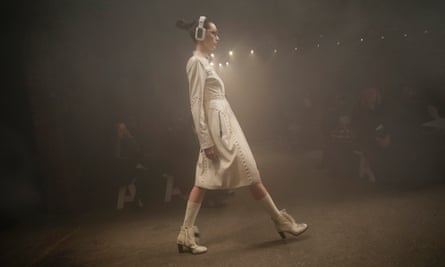
For a vast majority of the thousands of runway models who have flocked to New York this February, fashion week is everything but a moneymaking business. At best, they will walk away with a few thousand dollars in their pockets.
Realistically, if they get booked for a few shows they can hope to break even, which means they will cover the cost of their travel and living arrangements for the few weeks it takes to attend castings (for free), fittings (for free), parties (for free) and catwalks (where they will earn between nothing and $2,500, sometimes up to $5,000 for top names). A vast proportion of these women will most likely leave New York in debt.
In a study she is co-authoring, Ashley Mears, a professor of sociology at Boston University, found that between 2000 and 2010, 47% of models appearing on catwalks at one of the four major fashion weeks around the world only appeared once. That may simply sound like a short career, but bear in mind that many of these models take high risks to get to a fashion week in the first place.
Agencies will initially cover the costs of the models they have signed as they go about their castings and travels, seeking to make a name for themselves. Everything is accounted for, and as taxis are hailed to make industry events and rents are paid for the apartments, the models accrue debt. This debt becomes leverage for poorly regulated agencies who are then able to send models to far flung countries and demand they complete unwanted assignments. To call it a form of indentured servitude is no exaggeration.
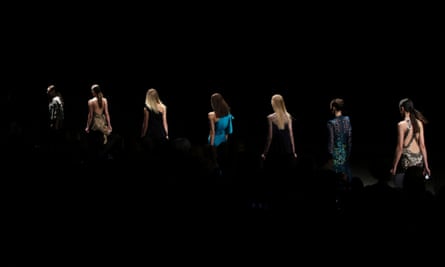
Why do models do it? The first reason is exposure. Catwalks are where “faces” get “discovered”, to use industry slang. Discovery might lead to major campaigns or editorial work, which is where the money lies.
Ragnhild Jevne, a 25-year-old Norwegian model based in New York, tells me in between shows that walking for US fashion designer Alexander Wang can make a girl’s career. Jevne, who has appeared on the cover of Japanese Vogue and is signed with IMG, is one of the rare models making money. Even so, the four or five shows she will have done over the course of fashion week will have brought in between $1,000 and $2,000 each, she says. Take away agency fees and taxes, and you probably have enough to pay New York rent for a month or two. You can forget about the yacht.

Working for exposure, with the constant dangling carrot that discovery might just be one casting away, is far from exclusive to the modeling industry. To that extent, fashion models are actually no different from other young workers in creative industries who are expected to train to high levels and work hard for little to no formal remuneration – whether under the form of internships, unpaid or contract work. That runway models are the face of a new class of precarious workers, rather than lavishness or extravagance, is undeniably ironic.
Mears explains why, in an industry where fashion week generates $900m a year for New York City alone, a hoard of mostly female models are only able to touch the smallest of fractions of profit: the answer lies in a 19th century gendered understanding of capitalism and luxury.
“Women’s bodies lend status, or are status signifiers of luxury, especially to men. Women are central to showing off assets that are mostly controlled by men,” she said, adding that those at the top of the large luxury chains like Gucci Group and LVMH continue to be men. “The people who are making the profits and drawing up the contracts are largely men.”
Unequal gender dynamics are not limited to asset control. Sexual harassment is rampant and widely accepted in the business. A survey by Model Alliance reveals that almost 30% of models report experiencing inappropriate touching on the job and 28% report being pressured into sex on the job. In two-thirds of the cases, those models who opted to inform their agencies about work-based sexual harassment were met with agencies who “didn’t see the problem”.
Although worrying, Ziff found these figures unsurprising: it is confirmation of what she’s observed.
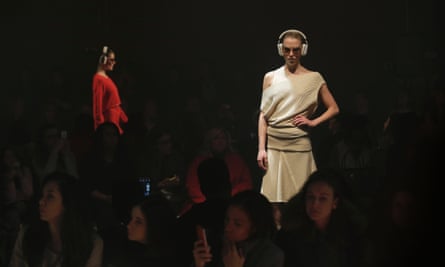
Katrine Bregengaard, a 29-year-old Danish visiting researcher at Columbia University who was a model between the ages of 14 and 20, remembers avoiding drinks at castings after hearing tales about colleagues being drugged.
Bregengaard recalls a “disturbing” summer when she was 16 and went to Athens to work as a model and live in a house full of other underage girls. Over the course of a couple of months, castings mingled seamlessly with outings to nightclubs where free drugs and alcohol flowed. A photographer in his late 30s working for Nike took her and another 16-year-old model on a three-day getaway to Mykonos, expecting sex in exchange for the trip and acting out when he did not get his way.
“When I was in these situations I felt like I was in control and in control of my own life. I didn’t really like it, but I felt in control. When you are 16, that’s the illusion,” Bregengaard said of the experience. “But you’re not in control, you have no idea what is going on. It is outrageous what girls have to go through.”
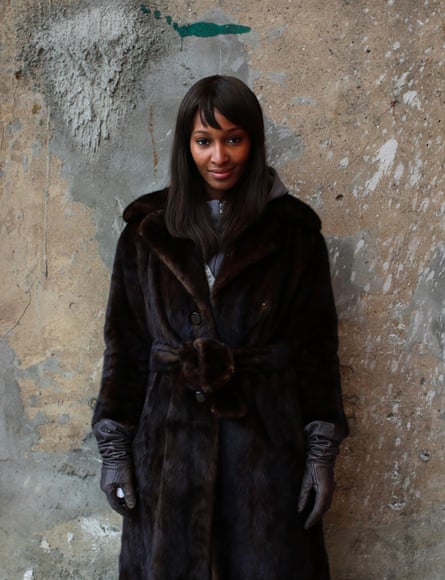
By the end of that summer, Bregengaard was in debt to her world-class agency, having only booked a couple of jobs. The debt was canceled out by work she did later in Denmark. By the time she quit, six years after starting, the current human rights and history scholar had managed to save just enough to do some traveling for a year.
“There’s always this carrot in front of you. If you do this show or that show then you will get your name out there. For most girls, this never really happens. I never really made it big or anything. I got money, but nothing in terms of the work that I actually put into it.”
While she was modeling, Bregengaard says she felt cool, and at times felt that corresponding to an aesthetic ideal seen as worthy of celebration was enough. This may be a second reason why models at fashion week accept to work for as little as no money at all: prestige.
“I think the industry has learned how to exploit the status of what it means to be a model, labor-wise” Bregengaard says. “Even if you work for free, you are already rewarded because you are part of that exclusive production of luxury. You are part of the fiction that sells these products. You are already rewarded through that because that is what our society feeds off of.”
Yomi Abiola, a model turned journalist who was the first African British face of Maybelline, says that the industry was “empowering but disempowering at the same time”. The first because it allowed her to discover her beauty and finding acceptance through that, and the second because of being made to feel black, and therefore it turned out, simultaneously unaccepted or rejected.
When she moved to New York in her early 20s, having already signed campaigns with major clients, Abiola still struggled to find an agency to take her on. Agencies told her they already had one black model on their books, she says.
Today, diversity still feels like a token gesture. At a Monique Lhuillier runway show last week, only two out of around 20 models were non-white. This is only marginally worse than fashion week over all, which counted eight out of 10 models on the catwalk as white – a figure that has barely changed over the last few seasons.
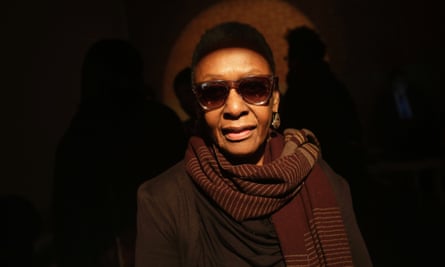
Veteran model Bethann Hardison, who has been an outspoken advocate for diversity, says she will stop short at calling designers “racist”, but insists the continual cases of individual choices selecting white bodies and faces over faces and bodies of color leads to a racist outcome. She says models are afraid to speak up themselves for fear of jeopardizing their careers even further.
Part of the difficulty in confronting the lack of diversity in fashion is that in an unregulated industry models are often not treated like actual workers – rather embodiments of ideals of beauty. Discrimination as an issue is circumvented by designers and editorial stylists raising the argument of aesthetics and color palettes.
But black skin being “out” of fashion is something Abiola is tired of hearing. Partly to address this, Abiola now heads her own corporate social responsibility organization called Stand up for Fashion.
“You hear, ‘Our customers don’t want this’, or ‘We are giving our readers what our readers want’. That’s what they say,” she recounts. Abiola thinks if the fashion industry wanted to shift some paradigms, it could easily do so.
Sharon Folkes strikes a pose on the red carpet. In her right arm, she holds Beyoncé, in her left, Lady Gaga – her two pet chickens. The three are having their photos taken on the top floor of a Manhattan hotel, just a few hours before they are due to strut down the catwalk together in what apparently has become a signature event during fashion week: the New York pet fashion show.
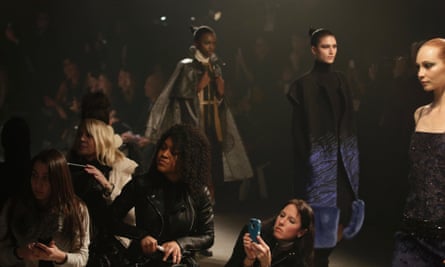
Backstage, Anthony Rubio, a leading dog clothes designer dressed in bright green silk, is being interviewed by a television crew. Nearby, Chen Sahar, a jewelry designer in from Israel, holds open a box revealing a dog collar and a dog bracelet. The matching set, made up of Swarovski crystals and leather produced in the same Italian factory used by Bottega Veneta, is being sold for $12,000. At a severe price hike, Sahar confides she would be willing to make them custom in diamonds.
As the clock ticks closer to the show’s kickoff, Folkes, an NYPD school safety officer by day, stands by the buffet, answering questions while eating. She explains that chickens Beyoncé, who is sporting red nail varnish on the tip of her claws, and Lady Gaga, who has been dyed bright pink for the occasion, have been invited here as special guests – by which she means they are not being paid for their appearance.
Folkes picks up the delicious-smelling roasted chicken brochette from her plate, takes a large bite, and shrugs. The lack of pay is not something she seems to mind.
The absurd perversity of the moment is striking. But in many ways, chickens Beyoncé and Lady Gaga are far from an exception in the world of runways and New York fashion week. Rather, they represent the norm of a working class of human performers – or models – whose mostly underpaid bodies are used to evoke sometimes grotesque visions of luxury.
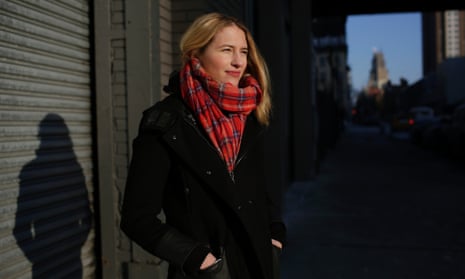
Comments (…)
Sign in or create your Guardian account to join the discussion